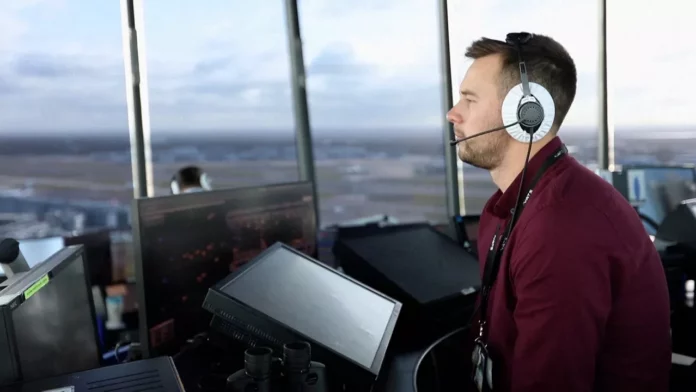Heathrow Airport is testing a new artificial intelligence (AI) system to help air traffic controllers manage the UK’s busiest airspace.
Handling nearly half a million flights a year – an average of 90 flights per hour throughout the day – Heathrow, the world’s fourth busiest airport, relies heavily on effective coordination to ensure safety and minimize delays.
The artificial intelligence system, called Amy, combines radar and video data to track aircraft on the airfield, creating a holistic visualization of aircraft positions.
NATS, which is responsible for air traffic control, says the technology can help controllers keep an eye on aircraft even when they are out of sight using 4K cameras and radar.
“It all starts with the digital control tower. That’s where we replace the view from the window of the traditional tower cabinet above us,” says Andy Taylor, chief solutions officer at NATS.
“That information, because it’s now digital rather than analog, means we can send that information through processing. And that processing… is done through our digital artificial intelligence system, which is known as Amy.”
The system provides key data about each aircraft, such as flight number, type of aircraft and whether it is inbound or outbound.
By providing real-time data, AI helps controllers make faster and more informed decisions. The AI mechanism has already been tested on more than 40,000 flights.
NATS says it is preparing for a fully operational “digital emergency tower” by 2027.
It will serve as a backup system in case of emergencies or disruptions, without the need for visual surveillance of runways.
“AI is aligned with human colleagues”
However, experts warn that such AI systems may have limitations.
“The first is the lack of contextual judgment. This means that AIs typically don’t have a full understanding of specific systems, and nuances typically need to be handled by teams,” said Colin Rigby, Reader and Director of Entrepreneurship at Keele University.
“The second is data limitations. The AI has most likely been trained in fairly routine standard operations at airports. But really, when you need it, when things are out of the ordinary, when things go wrong, I think it brings us back to the idea of AI working alongside its human counterparts to achieve better outcomes for everyone involved,” Rigby added.
NATS says Amy is designed to work alongside human controllers.
Airports in Singapore, New York, and Hong Kong are considering implementing similar digital solutions.









